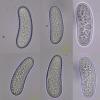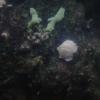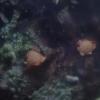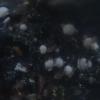
24-12-2025 17:08
Hulda Caroline HolteHello, I have found this propoloid ascomycete on

21-12-2025 09:32
Hello.A tiny ascomycete found embedded in wood in

21-12-2025 21:32
Pol DebaenstHello, Garden, Burgweg 19, Veurne, BelgiumOn 10/1

22-12-2025 23:38
Patrice TANCHAUDBonsoir, récolte sur un mur en pierre, apothéci

22-12-2025 00:47
Patrice TANCHAUDBonsoir, récolte à proximité du milieu dunaire
I have found this propoloid ascomycete on a dead branch, still attached to the living tree, of picea abies (in Norway). The apothecia are up to 1 mm diameter and are growing alongside lichens.
The ascospores are allantoid to ellipsoid and are filled with small guttules. The spore wall appears to be quite thick.
33,6-38,4 x (9,6) 10,4-12,8 µm
Me= 35,54 x 11,88 µm
Asci with croziers, measuring 172-182 x 24,6-32 µm (living) and 160-189,5 x 19,7 µm (dead). IKI-
The spores were measured in the living state from a spore print. All measurements were taken from fresh material in water.
Could this be Propolis hillmanniana?
Thank you in advance and best regards,
Hulda








